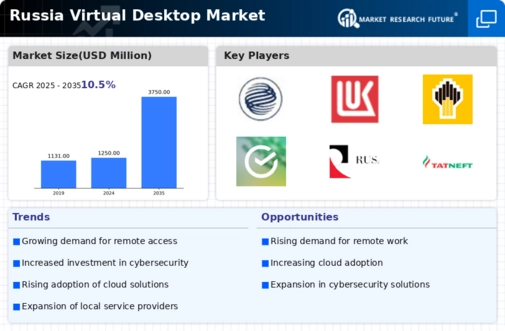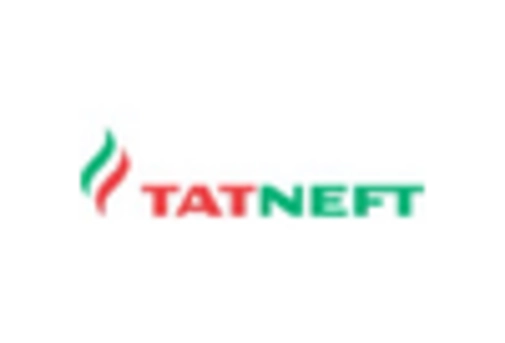The Russia Virtual Desktop Market is characterized by a dynamic competitive landscape, shaped by both local and international players. With businesses increasingly seeking flexibility, remote accessibility, and enhanced security features, the demand for virtual desktop infrastructure (VDI) solutions has surged. In this rapidly evolving sector, companies are striving to distinguish their offerings through innovation, customer service, and strategic partnerships. The market showcases a mix of established enterprises as well as emerging startups, each striving to capture market share while addressing the unique needs and regulatory challenges within the Russian landscape.
The competitive insights reveal that players are investing in technology advancements and localization strategies, creating tailored solutions that cater specifically to Russian businesses and their operational models.
VMware stands out in the Russian Virtual Desktop Market primarily due to its robust VDI solutions that offer enhanced performance, security, and deployment flexibility. The company's extensive experience and a strong reputation allow it to maintain a significant market presence, appealing to organizations looking for reliable and scalable solutions. VMware’s strength lies in its advanced technologies and management platforms that integrate seamlessly with existing IT infrastructures, providing a compelling user experience. Additionally, VMware is proactive in establishing partnerships with local companies, which aids in understanding the nuanced market requirements and regulatory frameworks of Russia.
Their ability to continually innovate and adapt their offerings, particularly by emphasizing security and compliance, further solidifies their standing within this competitive market.
Acronis also plays a pivotal role in the Russian Virtual Desktop Market, distinguishing itself with its comprehensive suite of data protection and backup solutions alongside its VDI offerings. Focused on ensuring data security and accessibility, Acronis has developed advanced products tailored for local enterprises, addressing specific security concerns and compliance with Russian regulations. Their notable strengths include a strong commitment to innovation and an agile approach to product development. Acronis leverages strategic partnerships and has engaged in mergers and acquisitions to enhance its market position, integrating advanced technologies to bolster its service portfolio.
This has allowed Acronis to deliver unique solutions that cater to the evolving needs of Russian businesses, ensuring that they remain competitive while addressing the challenges surrounding data security and virtualization. The company's local presence and expertise are evident in its ability to adapt quickly to market dynamics and customer feedback, making it a formidable competitor in the Russian virtual desktop landscape.
















Leave a Comment